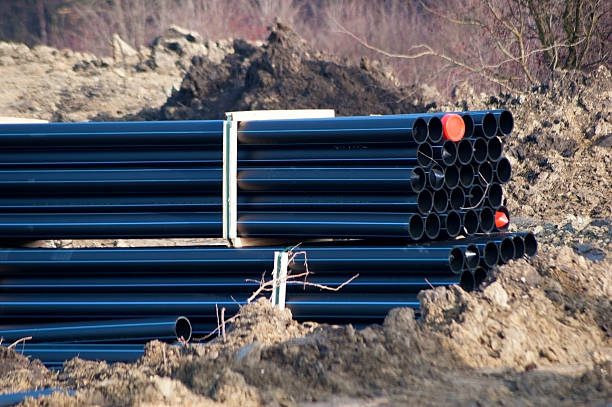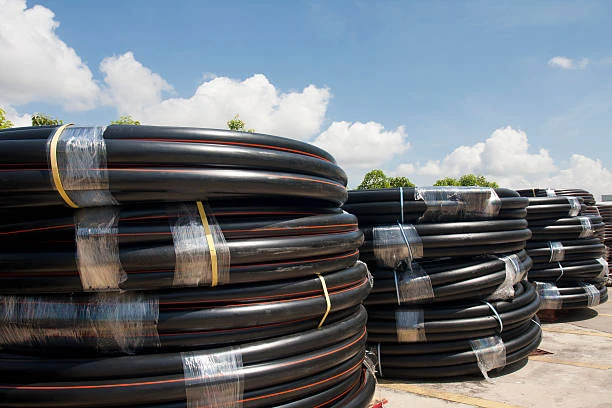As cities expand and industries grow, the demand for reliable and environmentally responsible infrastructure also rises. Among the many options for pipeline construction, HDPE pipes have emerged as a strong contender for sustainable pipeline systems. Engineers, municipal authorities, and contractors now examine pipeline materials not only for performance and cost but also for long-term environmental impact.
When evaluating pipeline materials, stakeholders consider durability, recyclability, production emissions, energy consumption, and waste generation. This article compares common materials—including PVC, concrete, steel, and ductile iron—against HDPE pipes, using a sustainability lens.

Lifecycle Durability and Longevity
Material longevity plays a central role in sustainability. HDPE pipes offer an impressive service life that often exceeds 50 years under normal operating conditions. Unlike steel and ductile iron, HDPE does not corrode, rust, or suffer from internal scaling. Concrete and clay, although durable, can degrade due to chemical exposure or shifting soil conditions.
By eliminating frequent repairs and replacements, HDPE pipes reduce resource consumption and energy use throughout their lifecycle. This longevity helps municipalities and industries lower their carbon footprint over decades.
Energy Efficiency in Manufacturing
The energy needed to manufacture pipeline materials varies significantly. Steel and ductile iron require high-temperature processing, which consumes large amounts of fossil fuel energy. Concrete production involves cement, a material with high embodied carbon due to limestone calcination and combustion.
In contrast, manufacturers produce HDPE pipes using thermoplastic resin melted at lower temperatures, which significantly cuts energy use. Even compared to PVC, HDPE production typically results in fewer greenhouse gas emissions per linear meter of pipe.
Transportation and Installation Impact
Transportation emissions form another critical component of a pipeline’s environmental footprint. Because of their light weight, HDPE pipes require fewer transport resources than heavy concrete, ductile iron, or steel alternatives. Fewer trucks and reduced fuel use lower both operating costs and environmental impact.
During installation, contractors also benefit from HDPE’s flexibility and jointing methods. Fusion-welded joints eliminate the need for concrete thrust blocks or metal clamps. These properties speed up the construction timeline, reduce machinery use, and minimize jobsite waste—making HDPE pipes a cleaner option.
Recyclability and End-of-Life Options
End-of-life strategies influence the total sustainability score of any pipeline material. While steel and ductile iron offer excellent recyclability, they also lose energy in the melting and refining process. Concrete, on the other hand, has limited reuse potential and typically ends up as road base or rubble.
HDPE pipes, however, provide high recyclability without degradation of performance. Regrinding and reprocessing post-consumer HDPE helps create new pipes, drainage systems, or even consumer goods. Some manufacturers incorporate recycled content into non-pressure HDPE products, closing the material loop.
Leak Prevention and Water Conservation
Leakage from water and gas pipelines wastes natural resources and energy. Old infrastructure often suffers from joint failures, corrosion holes, or root infiltration. Fusion-welded HDPE pipes offer a zero-leakage solution by creating seamless, monolithic pipelines.
By preventing leakage, HDPE pipes conserve potable water, reduce treatment energy, and minimize environmental contamination. Over time, this leak-free system supports cities in meeting water conservation goals and strengthens their sustainability credentials.
Soil and Chemical Compatibility
Different soil conditions and aggressive chemicals can degrade many pipeline materials. Acidic soils, sulfates, and industrial waste streams often damage concrete and metal pipes. Engineers then need to add protective coatings or install expensive cathodic protection systems.
HDPE pipes resist nearly all naturally occurring chemicals, acids, and alkalis. They also maintain integrity in contaminated or shifting soils. This chemical and soil compatibility reduces the need for protective materials and extra maintenance, supporting sustainable design with fewer resources.
Noise, Emissions, and Jobsite Impact
Construction sites can generate noise, dust, and disruption for surrounding communities. Heavy equipment needed for installing concrete or iron pipelines often creates more emissions and delays. In contrast, crews can install HDPE pipes with smaller equipment and lighter handling processes.
Trenchless installation techniques—such as horizontal directional drilling—work especially well with HDPE. These methods reduce excavation, avoid traffic disruption, and minimize habitat disturbance. By enabling more eco-friendly installation practices, HDPE pipes offer practical sustainability advantages from day one.
Cost and Environmental Return on Investment
Although HDPE sometimes carries a higher initial material cost than PVC or concrete, its long-term savings and environmental returns justify the investment. Reduced repair costs, energy efficiency, lower leakage rates, and recyclability combine to offer a higher sustainability ROI.
Project planners can quantify these benefits using tools such as life cycle assessment (LCA), which consistently favors HDPE pipes over more traditional materials in terms of global warming potential, energy demand, and pollutant emissions.
Conclusion: HDPE Pipes Lead in Sustainable Infrastructure
In nearly every category—durability, recyclability, manufacturing impact, installation ease, and long-term performance—HDPE pipes prove their superiority as a sustainable pipeline material. Whether used in urban utilities, industrial facilities, or rural water systems, HDPE supports environmental goals while delivering dependable infrastructure.
As cities face aging pipelines and climate change threats, engineers and decision-makers increasingly choose HDPE pipes to build the future. These thermoplastic systems align performance with sustainability, offering a reliable path toward eco-conscious development.
FAQ: Installing HDPE Pipes
Q1: What tools do I need to install HDPE pipes?
You need fusion welding equipment—either butt fusion or electrofusion machines—along with pipe cutters, scrapers, and alignment clamps. These tools help ensure strong, leak-free joints.
Q2: Can I install HDPE pipes in cold weather?
Yes, but you must follow cold-weather fusion procedures. Keep pipe ends dry and preheat them properly to prevent incomplete fusion.
Q3: How do I ensure proper alignment during installation?
Use pipe alignment clamps and stable bedding. Make sure the pipe remains straight and fully supported along its length before and during welding.
Q4: Can I bend HDPE pipes on site?
Yes. HDPE allows for a flexible bending radius. Always follow the manufacturer’s guidelines to avoid kinking or overstressing the pipe.
Q5: How do I test an HDPE pipe system after installation?
Perform a hydrostatic pressure test after the joint cools. This test confirms joint integrity and system pressure performance before final backfilling.

















